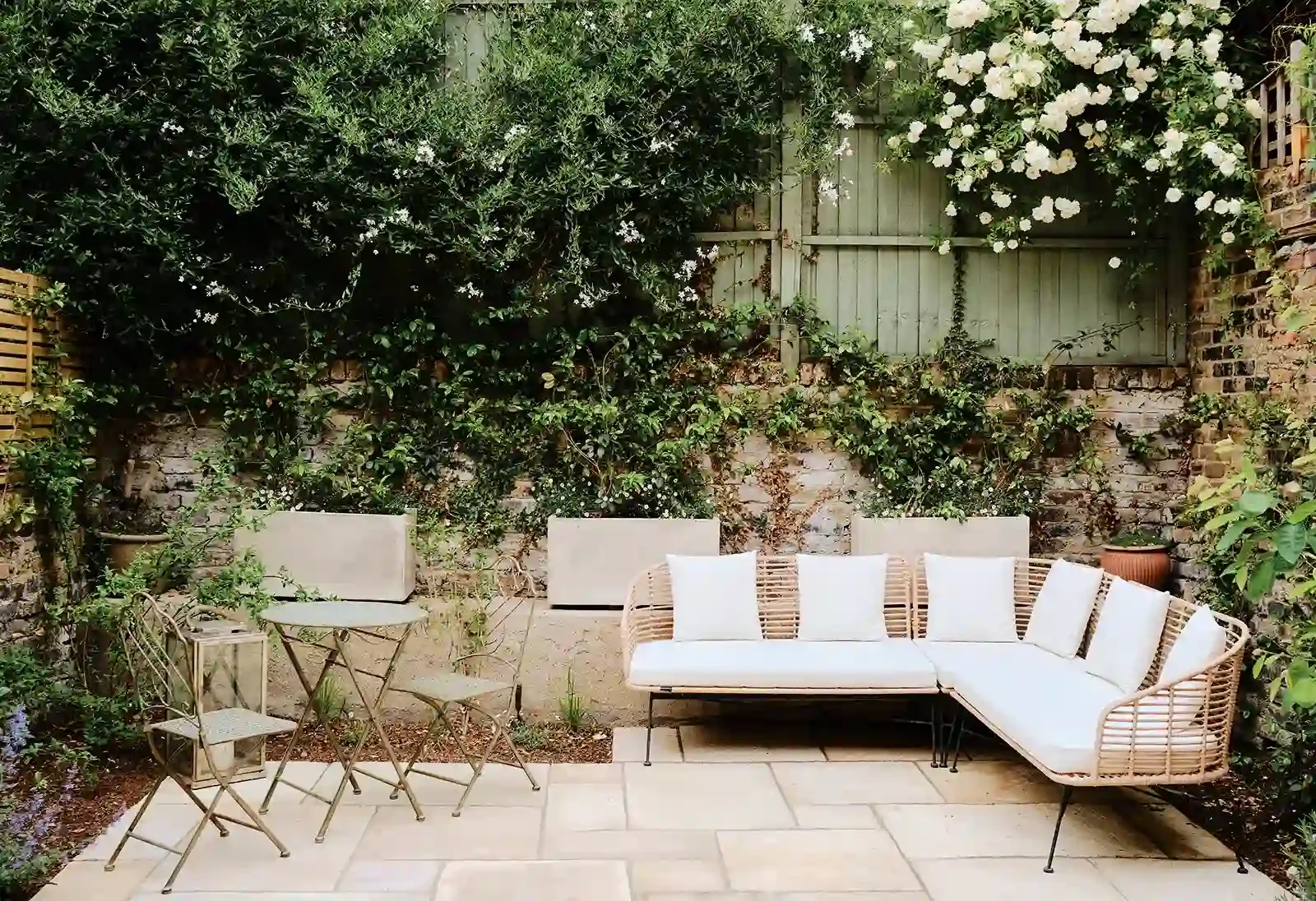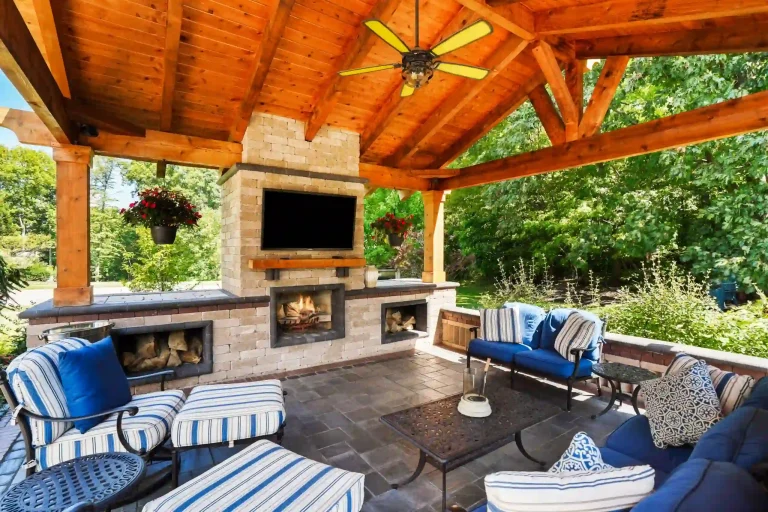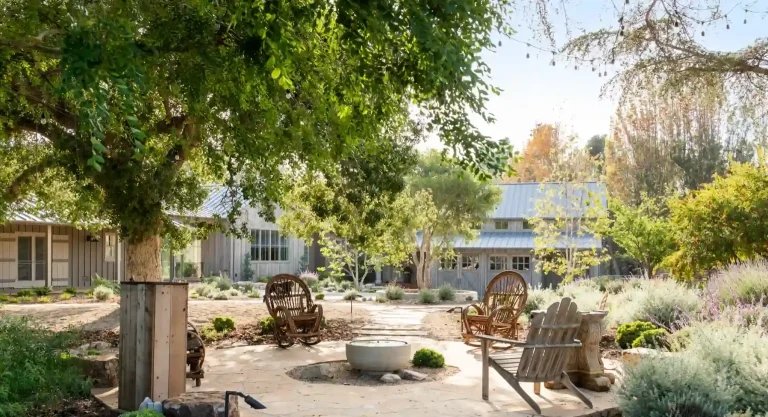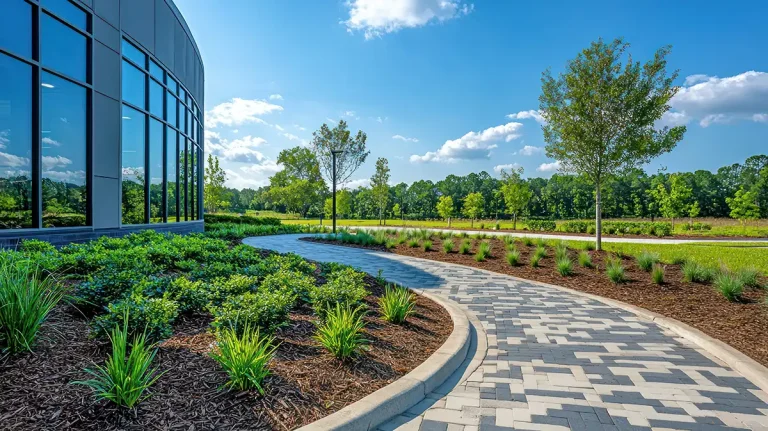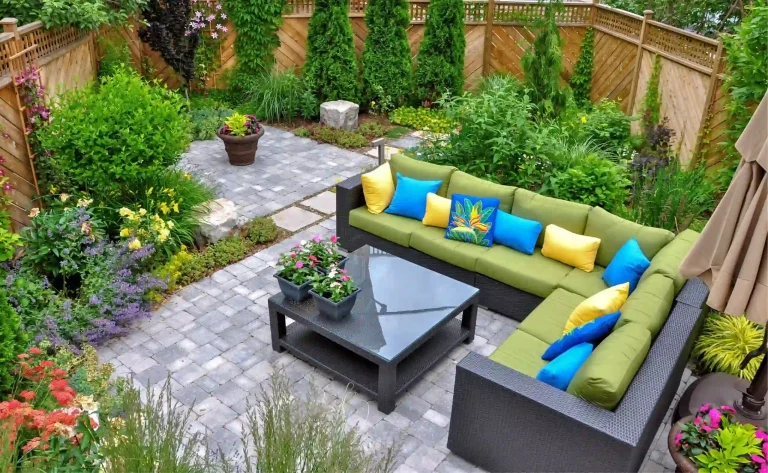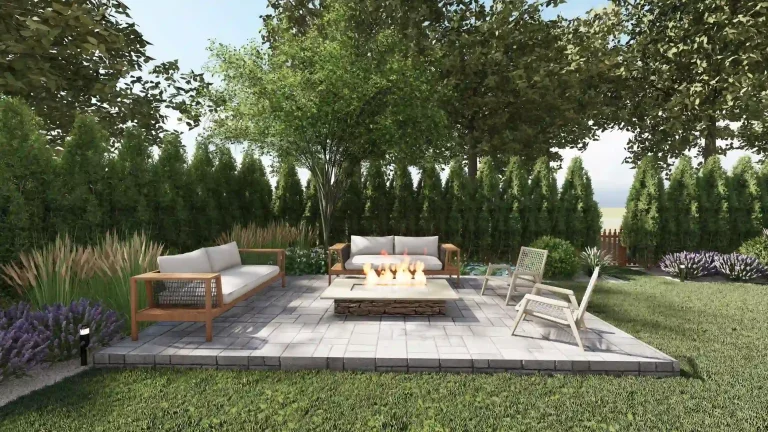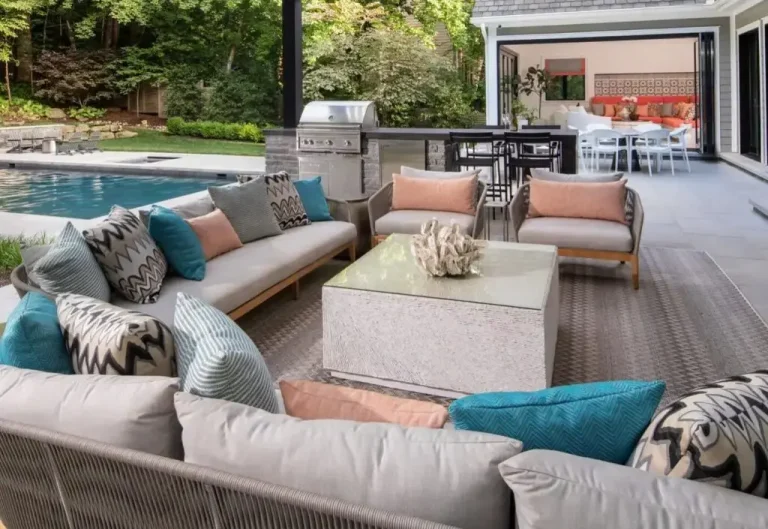Smart Landscape Design for Small Yards: Ideas, Tools & Examples
Why Landscape Design Matters for Small Yards
A small yard can feel limiting, but with the right landscape design, it doesn’t have to. Good design can transform cramped areas into functional and aesthetically pleasing retreats.
One core benefit of intentional design is that it helps you optimize every square inch: pathways, seating, planters, vertical features, and focal points all play a role. Without a plan, you may end up with clutter, awkward, unusable patches, or maintenance headaches.
Another major benefit is increasing property value and curb appeal. Even compact yards benefit when thoughtfully organized. Prospective buyers or visitors often notice attractive landscaping even in modest spaces as a sign of care and refinement.
Finally, landscape design tailored to small yards can reduce maintenance, improve drainage and plant health, and integrate modern features like lighting and seating without feeling overcrowded.
In short: the right design elevates your yard from leftover land to a valuable outdoor room.
Key Design Principles for Compact Outdoor Spaces
Balance of Hardscape and Softscape
When space is limited, the contrast between hard surfaces (like paving, stone, wood decking) and soft elements (plants, ground cover, shrubs) must be harmonious. Too much hardscape can feel sterile; too much planting can feel chaotic or cramped. Use paving only where essential, like narrow paths, and allow planting beds or vertical gardens to fill in the rest.
Focus on scale: choose smaller stones, narrow walkways, and low-profile edging. Use curves or diagonal lines to create visual flow and trick the eye into “seeing” more depth. Repetition in materials and colors helps unify the look.
Use Vertical and Layered Elements
In small yards, height is your ally. Instead of spreading outward, build upward. Think trellises, climbing vines, espaliered plants, raised planters, and vertical wall gardens. These elements free up ground space while layering visual interest.
Layering, placing taller elements in the back, medium in the middle, and ground covers in front, gives depth and hierarchy to the design. A well-placed vertical feature becomes a focal point without overwhelming the area.
Create Zones and Focal Points
Although the yard is small, you can still carve out zones: a seating nook, a walkway, a planter area, or a small water or fire feature. Use focal points such as a sculpture, a container planting, or a pergola so the eye is drawn beyond the confines of the yard.
To avoid clutter, keep zones small and connected. Use consistency in materials (like repeated pavers or plant types) to maintain continuity.
Optimize Circulation and Sight Lines
In tight spaces, how you move matters. Keep pathways minimal, direct, and fluid. Avoid long fences or walls that block sight lines. Lower planting near walkways helps maintain openness. Aim for “borrowed views” by framing neighboring greenery beyond your fences to help the yard feel larger.
Focus on Functionality
Don’t just design for lookssdesign for how you’ll use it. Ask: Will people sit? Eat? Read? Entertain? Walk a dog? Grow herbs? The design must support these functions. Every design decision should contribute to usability, not just decoration.
Product Tools That Help Bring Small Yard Designs to Life
To implement your design effectively, you need the right tools and equipment, especially in small spaces, where precision matters. Below are five real-world product ideas that are especially helpful for landscape design in small yards, with use cases, benefits, and tips for purchase.
1. Mr. Pen Landscape Templates & Drafting Tools
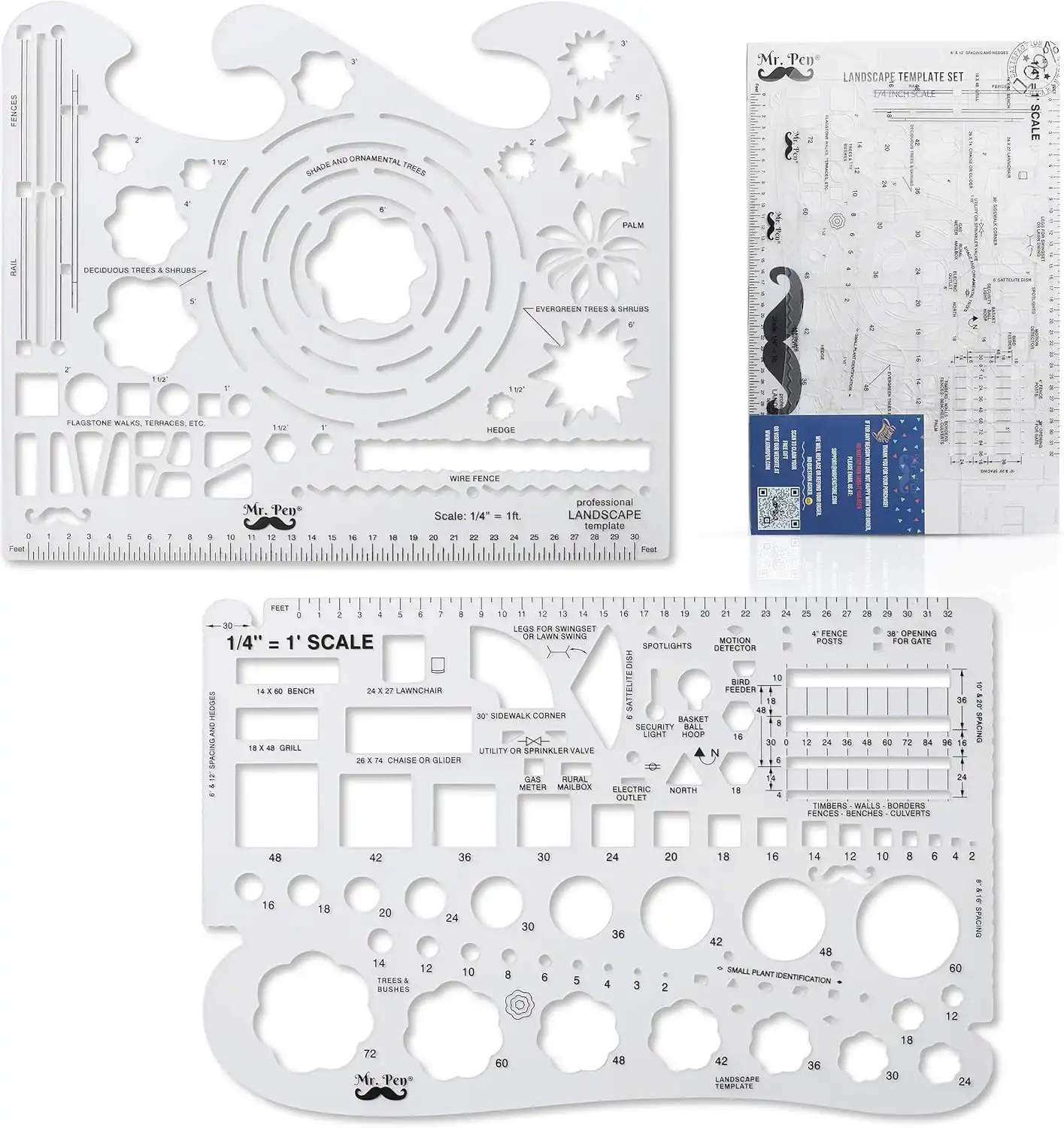
This tool is a compact, durable drafting template kit used by landscape architects and hobbyists. It helps you draw scaled plant symbols, hardscape shapes, and planning diagrams on tracing paper or graph paper.
Why it Helps: In a small yard, you’ll often iterate several layout options before settling. Having a physical template set simplifies sketching to scale, testing furniture placement, and visualizing transitions.
Use Case: Before installing pavers or planting beds, you can sketch different arrangements (e,.g. moving a bench or relocating planters) to see which arrangement fits best without crowding circulation.
Where to Buy: Available from architecture supply retailers or marketplaces (look for “landscape drafting template sets”). Price is usually modest. It’s a good investment because you’ll frequently reuse it for revisions or future garden designs.
2. Milwaukee M18 FUEL QUIK‑LOK Edger Attachment
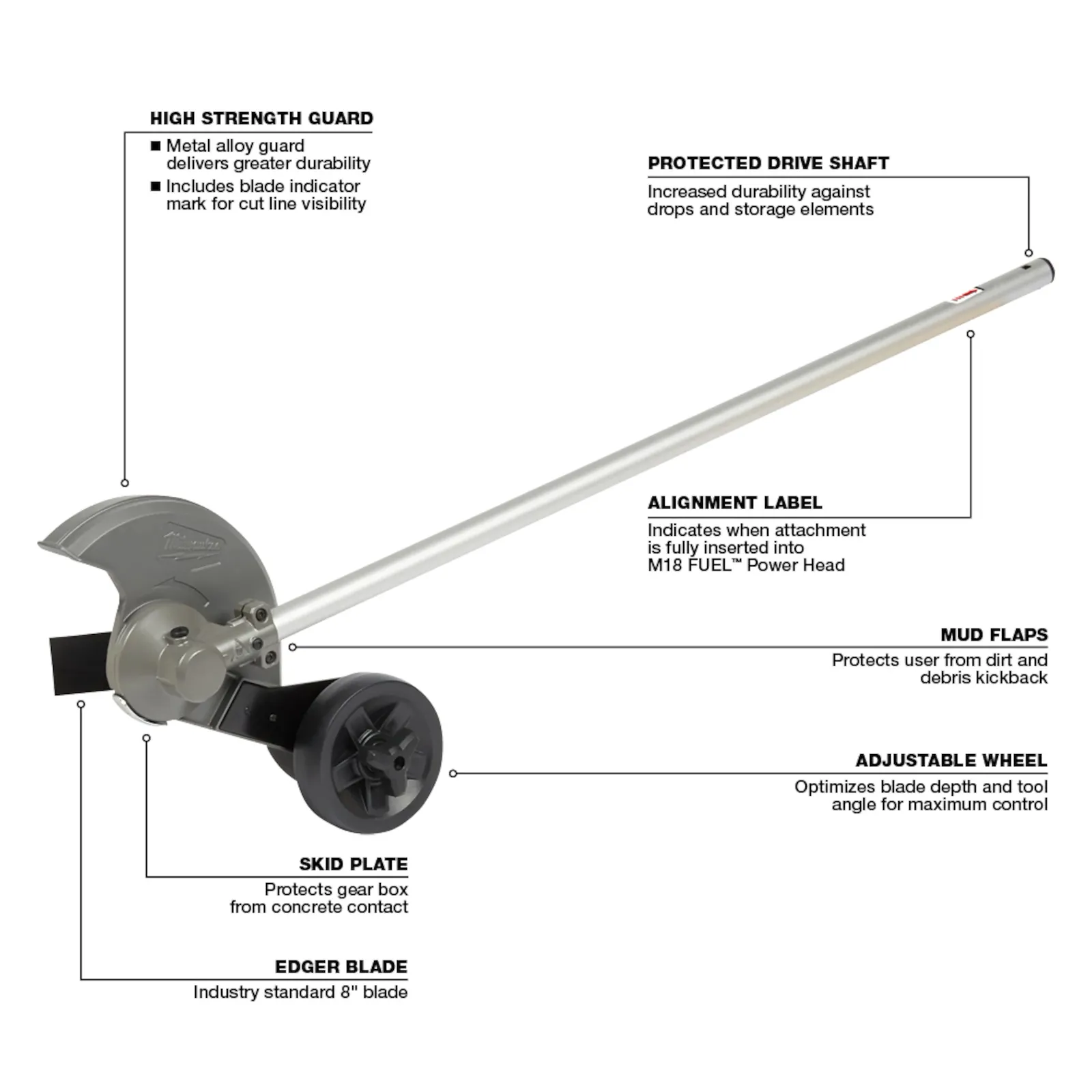
This is a powered edging attachment for an M18 tool battery system. It helps cut precise, clean edges along planting beds, pathways, or lawns,,s especially useful in tight curves.
Why it Helps: Clean edges define zones, reduce overgrowth, and give a crisp look to small landscapes. Manual edging in compact spaces is tedious.
Use Case: When you want a neat separation between lawn or path and planters along curved borders, this tool gives precise results with minimal effort.
Purchase Tips: Ensure you own (or are willing to buy) the Milwaukee M18 battery platform. Check local sellers or industrial tool suppliers.
3. SEYMOUR Midwest Leaf & Shrub Rake 48″
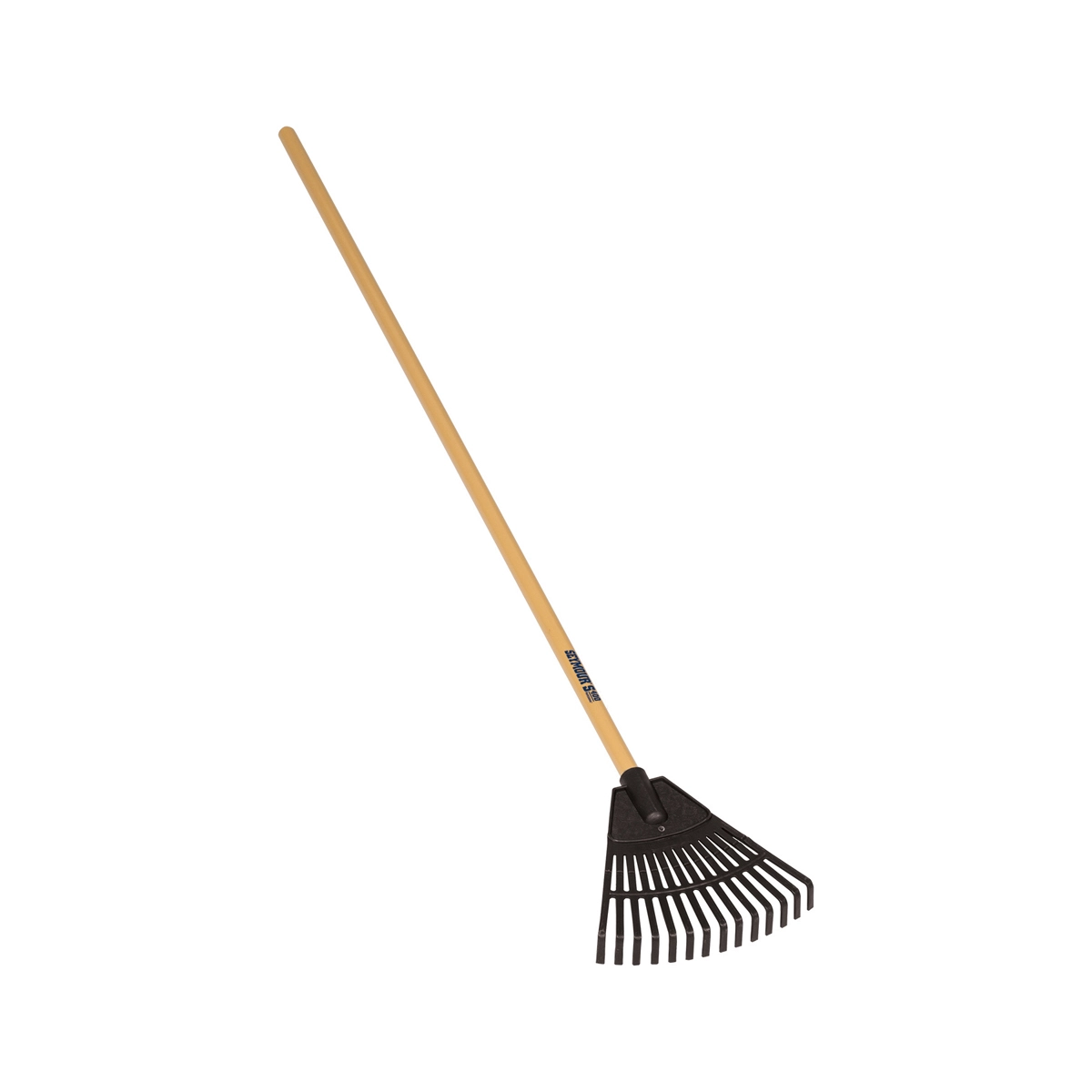
This rake has a wide fan head and adjustable length, ideal for gathering leaves, debris, or smoothing mulch.
Why it Helps: Small yards often fill with leaf litter or debris quickly because there’s little buffer space. This rake helps maintain plant beds, prevent clutter, and keep borders crisp.
Use Case: Use it weekly to sweep fallen debris from pathways or planting beds, keeping your small yard looking tidy and preventing soil erosion or blockages.
How to Buy: Look at garden centers or online gardening supply stores. Durable stainless or coated models last longer in humid conditions.
4. Razor‑Back Landscaper Spade 26″
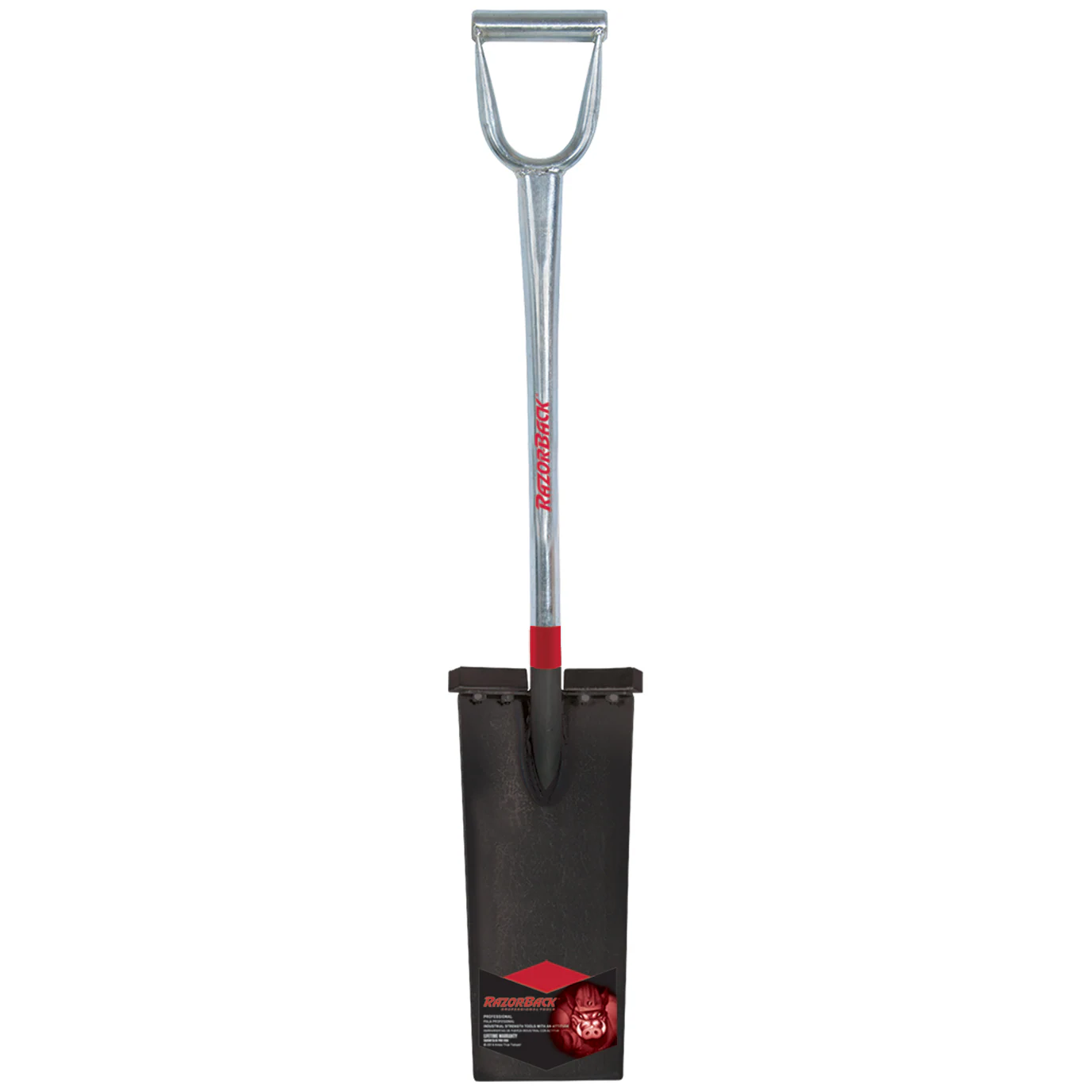
This robust spade is great for digging planting holes, edging, or moving soil in small gardens. The sharpened blade and sturdy handle give precise control.
Why it Helps: In a small yard, every planting or hardscape adjustment may require precise digging. A quality spade lets you dig in tight zones without damaging neighboring plants.
Use Case: Planting shrubs near existing features, creating planting pockets adjacent to raised beds, or cutting turf edges for new paving.
Where to Buy: Landscape supply stores or online garden tool retailers. Choose models with comfortable grips and corrosion-resistant steel.
5. DeWalt 20V MAX XR Cordless Pole Saw Kit
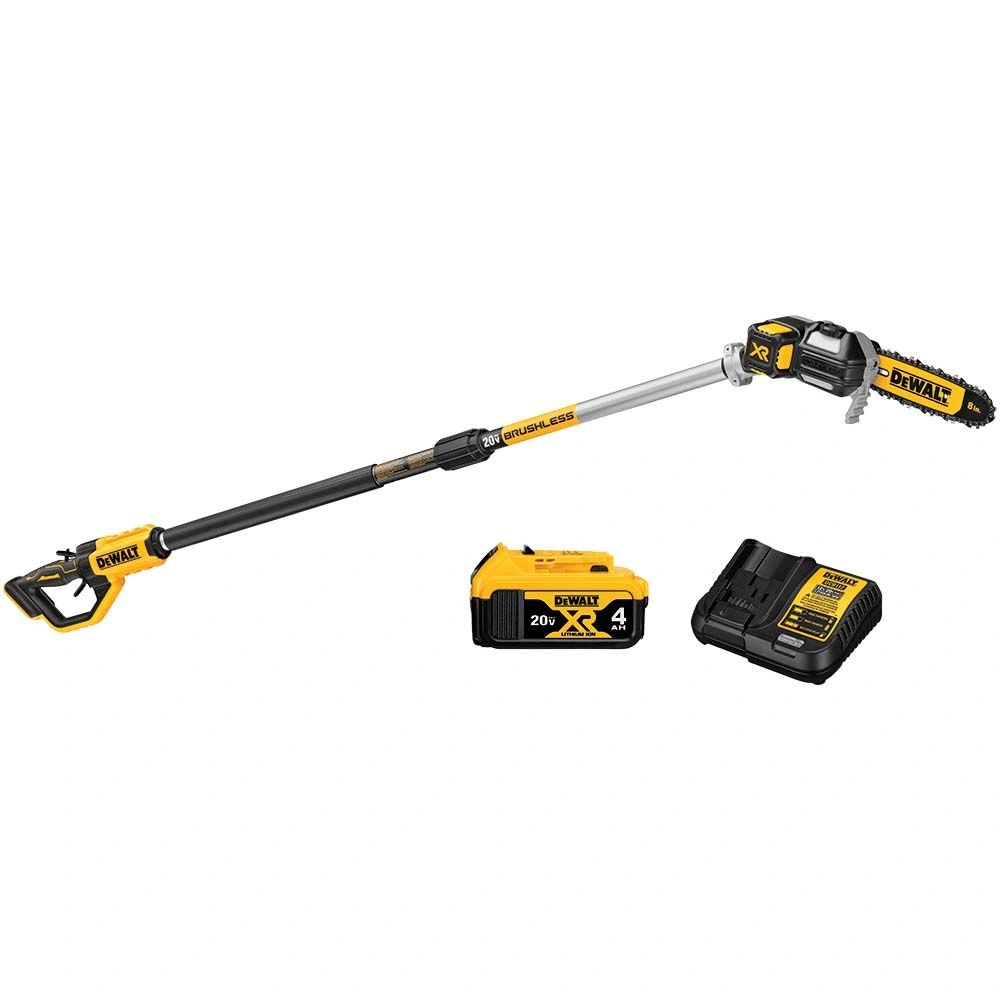
This battery-powered pole saw allows you to prune overhanging branches from ground level, reaching taller shrubs or small tree limbs without ladders.
Why it Helps: In a tight yard, ladders may not fit or may scratch surfaces. A pole saw gives safe access to prune, shaping your vertical elements or controlling the canopy without damaging other parts of the space.
Use Case: Trimming tree limbs that overhang into the yard, shaping tall shrubs, or thinning branches to allow light into the lower planting layers.
Purchase Tips: Ensure battery compatibility (20V MAX), and consider kit options (with battery and charger). Buy from trusted tool outlets.
How These Tools Solve Real Problems
-
Spatial Precision in Design: Using the drafting templates lets you test layouts and avoid misplacement of planters, paths, or furniture.
-
Defined Transitions: The edging tool ensures crisp boundaries between turf, pathways, and soil beds, making the design legible.
-
Clean Maintenance: The rake helps keep surfaces clear, preventing leaf litter accumulation that visually shrinks a yard.
-
Accurate Planting and Digging: The spade lets you work in tight spots without disturbing nearby elements.
-
Safe Vertical Pruning: The pole saw lets you maintain vertical balance in your design, control tree shading, and improve airflow without unsafe elevation.
By combining these tools with design principles, the small yard becomes a highly curated space rather than a mishmash of features.
Real-World Examples & Inspirations
Below are illustrative examples of small yard landscape design strategies (not necessarily sale items, but real projects you can learn from):
1. Urban Backyard Transformed with Vertical Gardens
An urban lot under 150 m² was revamped by replacing a central lawn with a narrow diagonal path of permeable pavers. Along the fence, modular wall planters with vines were installed to provide greenery without encroaching on floor space. A foldable bistro set tucked into a corner invites use without clutter.
Here, the design principle is clear: expand visually via diagonals and vertical planting. The small yard feels layered and dynamic, not cramped.
2. Pocket Patio and Stepping-Stone Path
Another small backyard included a square paver patio sized just for a table and two chairs. From it, stepping stones led to a herb garden and small planting beds. Between the pavers, low ground covers reduce hard surface dominance. Lighting was installed flush to the path edges to avoid bulky fixtures.
This illustrates balancing hardscape and planting to maintain function and openness.
3. Raised Terraced Beds on a Slope
A narrow side yard had a slight slope. The designer built three shallow terraced raised beds, each about 30 cm high, with retaining edges. Between terraces, narrow gravel walkways allow access. The top terrace is planted in shrubs, the middle in vegetables, and the bottom in groundcover. The terracing drew attention upward, creating a sense of depth.
This is effective for challenging terrain in small yards.
4. Curved Paver Path with Enclosure and Seating
In a small backyard, a curved serpentine path leads from a side gate into a hidden seating alcove. The path is flanked by low hedges, and the seating alcove is partially screened by vertical greenery. Lighting under the path edges illuminates at night.
The curved axis softens the rigidity of small rectangular spaces and draws pedestrians deeper into the layout.
5. Minimalist Design With Statement Focal Point
In a tiny courtyard garden, the designer used smooth aggregate concrete for the main floor and planted one sculptural tree in a square cutout. The focal tree is accent lit. A single bench faces the tree. The rest of the space is open, with minimal planting in planters along the walls.
This shows how restraint can make a small yard elegant and powerful.
Each of these examples reveals how constraints can breed creativity: diagonal layouts, vertical planting, raised beds, focal features, and minimal hardscape can transform modest yards into memorable landscapes.
Step-by-Step: How to Plan & Build Your Small Yard Landscape
Site Analysis & Measurement
Start with a base sketch: measure the yard, note fixed features (doors, walls, utilities). Identify sun/shade patterns, drainage paths, and microclimates (wet corners, dry edges). Note views in and out, consider “borrowed vistas” from neighboring greenery.
Establish Priorities & Functions
Decide how you’ll use the space: seating? Dining? Storage? Play? Herbs? Use your product tools (e.g. drafting templates) to test different arrangements that fit your priorities without overcrowding.
Create Layout Options
Sketch alternative layouts using your templates. Try variations: diagonal circulation, curved walkways, and alternate zone placements. Compare the pros and cons of each. Choose one that balances movement, openness, focal points, and planting space.
Select Materials & Plants
Choose paving or hardscape materials that visually recede (lighter color, narrow joints). For plants, pick species that suit small spaces, columnar shrubs, dwarf trees, and compact perennials. Use vertical or climbing plants to fill the space around the area.
Soil Preparation & Drainage
Improve soil in planting zones by mixing compost or quality topsoil. Ensure drainage is handled using French drains or gravel zones if run-off is an issue. In compact yards, puddling from poor drainage is a common problem.
Install Hardscape Elements
Lay paths, patios, edging, and retaining walls first. Use minimal joints and keep surfaces flush. Build raised beds or planters next. Here, the spade and edging tools help with precision.
Planting & Vertical Installation
Plant from back to front: tall/structural first, then midsize, then groundcovers. Install trellises, wall planters, or support wires for vines. Use lighting (e.g., low-voltage path lights) as you go,o so wiring hides beneath surfaces.
Finishing Touches & Maintenance Planning
Mulch beds, install drip irrigation or soaker lines, and schedule maintenance. Add seating or furnishings only after the hardscape and planting are settled, so you can avoid repositioning or damaging new features.
How to Buy Tools & Where to Source Landscape Products
Local Garden Centers and Hardware Stores
Visit large nurseries or home & garden chains; many carry quality spades, rakes, edging tools, and small landscape hardware. You benefit from seeing and feeling tools before purchase.
Specialty Landscape or Architectural Supply Shops
These often include stock drafting templates, specialized edging systems, and premium tools not found in general stores.
Online Marketplaces
Look for trusted sellers and read reviews. For example:
-
Mr. Pen Landscape Templates: buy via architecture supply or niche online shops
-
Milwaukee M18 Quik-Lok Edger Attachment: tool specialty retailers or major hardware e-commerce platforms
-
Spades, rakes, pole saws: major general marketplaces or tool specialty shops
Always check shipping fees, warranty, and local compatibility (e.g., battery system in your region).
Tip: Start with one or two critical tools (e.g., spade and edging) and expand your toolkit as needed. For tight budgets, secondhand or good-condition used tools are acceptable, but ensure quality (no bent shafts, good steel).
Frequently Asked Questions
Q1: How Do I Make My Small Yard Feel Larger?
Use diagonal or curved paths, vertical planting, consistent materials, light-colored paving, and focal points. Avoid visual clutter and maintain open sight lines. Borrowed views (seeing greenery beyond fences) help too.
Q2: What Plants Work Best In Small Yard Landscapes?
Choose compact, columnar, or dwarf varieties. Use climbing plants or wall gardens for vertical green space. Use groundcovers in narrow spaces and avoid wide sprawling shrubs. Native or low-maintenance species help reduce upkeep.
Q3: How Much Does Small Yard Landscaping Cost?
It depends on materials, plants, labor, and features like lighting or irrigation. A modest DIY plan using native plants and simple paving might cost a few million IDR, while a professionally built, fully featured yard could run significantly more. Planning and phased implementation help control the budget.
